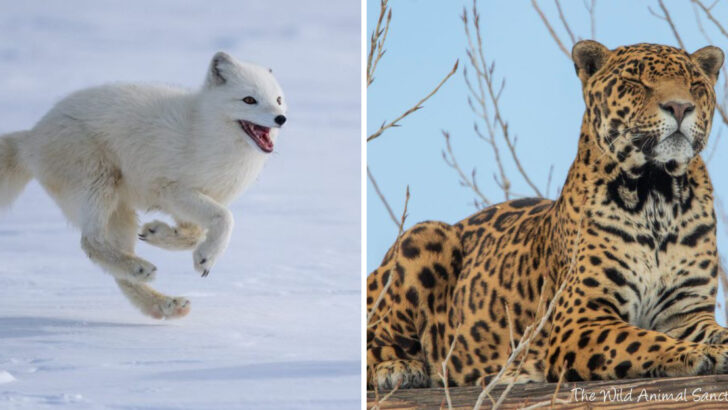The world is teeming with creatures so majestic, they take your breath away. From the towering giants of the savannah to the mesmerizing dancers of the ocean depths, these animals command respect with their beauty and power.
Imagine standing face-to-face with a lion, feeling the raw energy of the wild, or witnessing the ethereal flight of an eagle as it soars above the mountains. These animals aren’t just survivors—they’re symbols of nature’s awe-inspiring elegance.
Join us on a journey to meet 30 of the most stunning creatures on Earth. Each one is a masterpiece of evolution, perfectly crafted to thrive in its environment. Prepare to be captivated by their grace, strength, and undeniable presence. These are the animals that remind us just how extraordinary the natural world truly is.
African Elephant
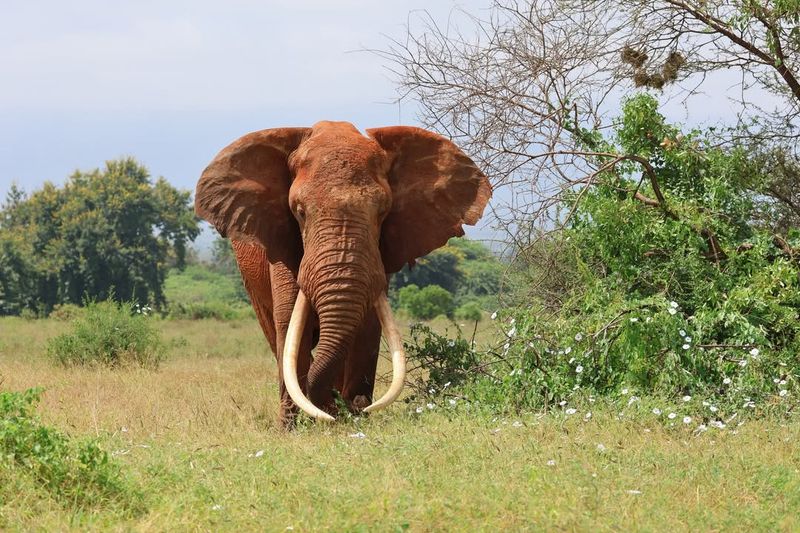
The African Elephant is the largest land animal, known for its remarkable size and intelligence. These gentle giants roam the vast savannahs and forests of Africa, displaying a complex social structure and deep familial bonds.
Their large ears help regulate body temperature, while their trunks are versatile, used for feeding, drinking, and social interactions. With a lifespan that can extend beyond 60 years, elephants are essential to their ecosystems, aiding in seed dispersal and creating water holes used by other animals.
Sadly, they face threats from poaching and habitat loss, making conservation efforts crucial.
Bengal Tiger
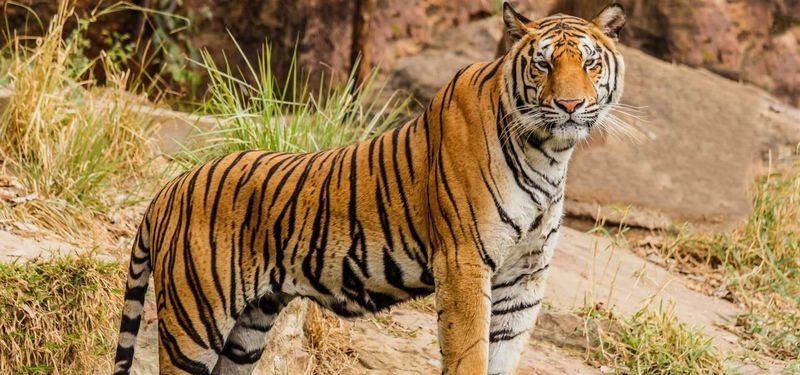
The Bengal Tiger, with its striking orange coat and black stripes, is a symbol of strength and beauty. Found primarily in the forests of India, these solitary predators are masters of stealth, relying on their camouflage to stalk prey.
Tigers play a critical role in maintaining the balance of their ecosystem by controlling the population of herbivores. Despite being apex predators, they face threats from poaching and habitat fragmentation.
Efforts are underway to protect these magnificent creatures through national parks and wildlife sanctuaries, ensuring they continue to roam the wild lands of India.
Bald Eagle
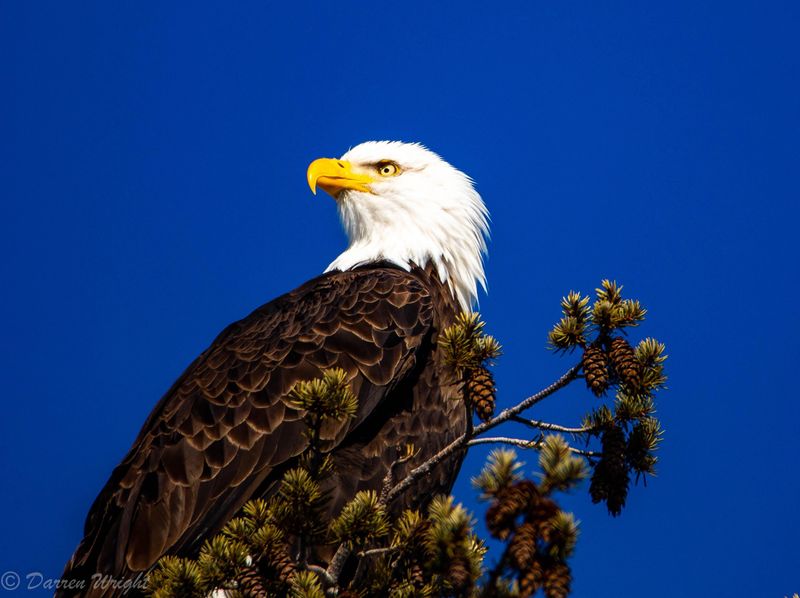
The Bald Eagle, a powerful bird of prey, is an iconic symbol of freedom and resilience in the United States. With its distinctive white head and tail, it soars gracefully over open waters and forests, showcasing its keen hunting skills.
These birds primarily feed on fish, snatching them from the surface with their sharp talons. Bald Eagles are known for their impressive aerial displays and strong pair bonds, often returning to the same nest year after year.
Once endangered due to pesticide use and habitat loss, conservation efforts have successfully restored their populations.
Giant Panda
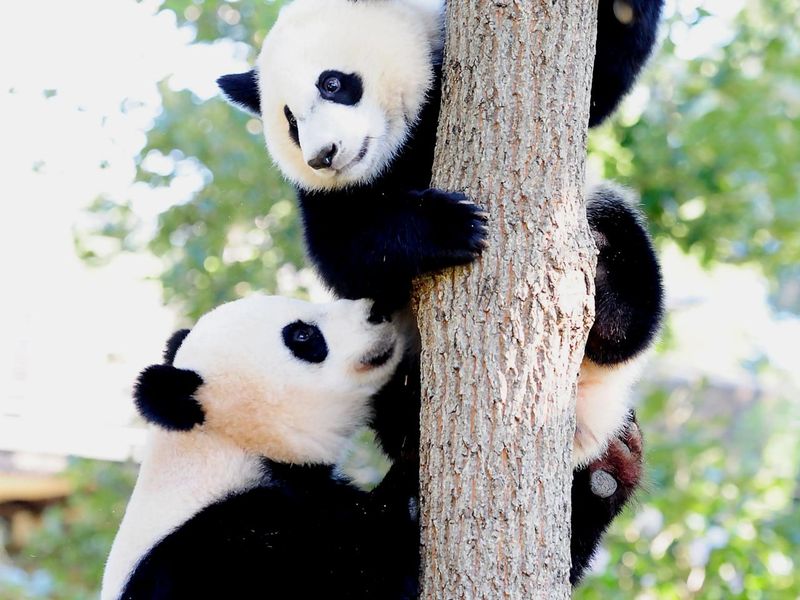
Giant Pandas are beloved for their distinctive black and white markings and gentle nature. These creatures inhabit the misty mountains and bamboo forests of China, where they spend most of their time consuming bamboo.
Pandas have a unique thumb-like extension that aids in holding bamboo stalks. Despite their docile appearance, they are solitary animals with a strong sense of territory.
Efforts to conserve pandas have led to the preservation of their habitat and successful breeding programs, ensuring that these charming animals continue to enchant for generations to come.
Snow Leopard
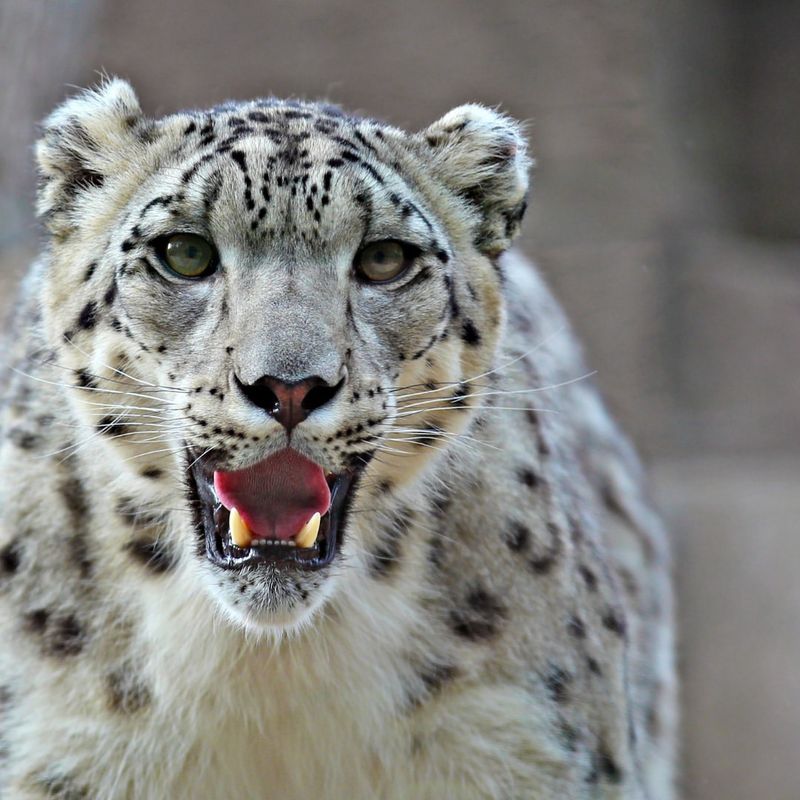
The elusive Snow Leopard, known as the “ghost of the mountains,” inhabits the rugged mountain ranges of Central and South Asia. Their thick, spotted coats provide camouflage and protection against the freezing temperatures.
Snow Leopards are solitary climbers, using their powerful hind legs to leap great distances in pursuit of prey. Despite their strength, they face threats from poaching and human-wildlife conflict.
Conservation efforts focus on habitat protection and community-based initiatives to mitigate conflict, ensuring that these mesmerizing cats remain part of the high-altitude ecosystems.
Humpback Whale
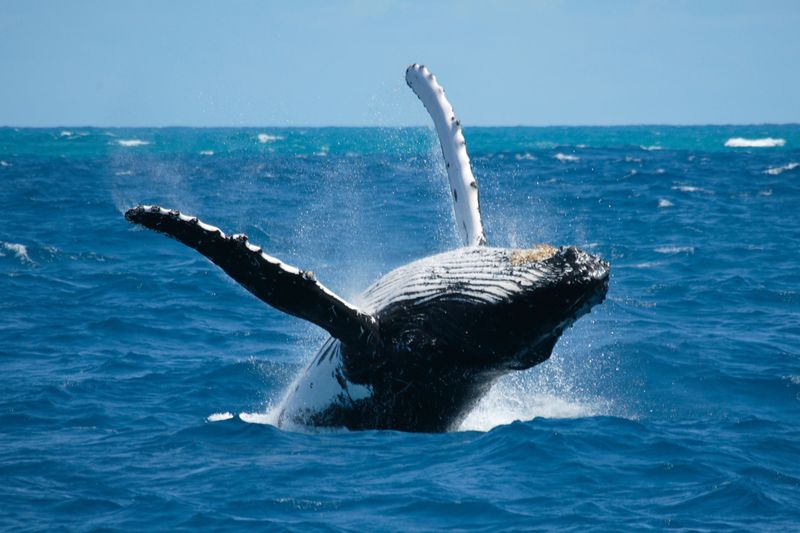
Humpback Whales are known for their acrobatic breaches and complex songs that resonate through the ocean. These giants of the sea migrate thousands of miles, often seen in groups called pods.
Their long pectoral fins and distinctive body markings make them easily recognizable. Humpbacks play an essential role in the marine ecosystem, impacting the food chain and ocean health.
While once heavily hunted, international protection efforts have allowed their numbers to recover, and today they are celebrated for their enchanting presence and contribution to marine biodiversity.
Peacock
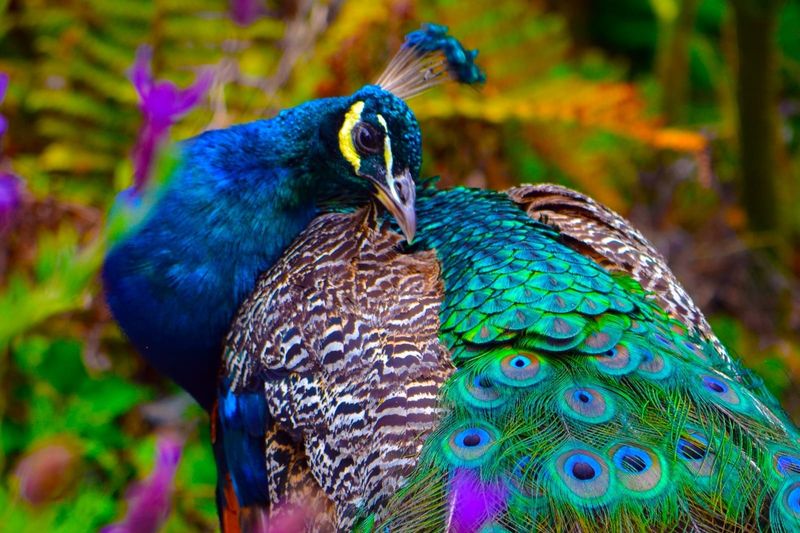
The Peacock is renowned for its dazzling plumage and elegant strut. Native to South Asia, these birds are a sight to behold, with males fanning out their iridescent tail feathers to attract mates.
Peacocks symbolize beauty and pride, often featured in art and folklore. Their calls echo through the forests, adding to their mystique and allure.
As ground-dwelling birds, they forage for seeds and insects. Although they face habitat loss, peacocks thrive in various environments, adapting to changes while continuing to capture the imagination of all who encounter them.
Polar Bear
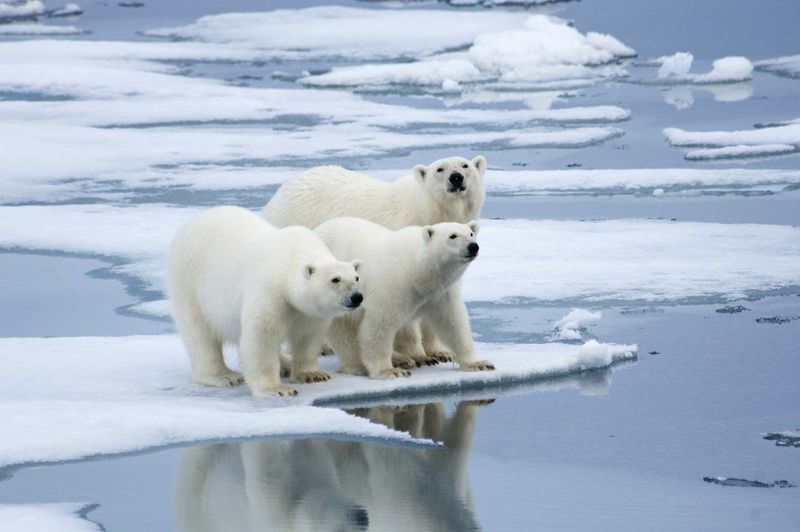
Polar Bears, the majestic rulers of the Arctic, are well adapted to life on the ice. Their thick, white fur provides insulation, while their strong limbs aid in swimming and hunting seals.
These solitary creatures travel vast distances across the ice in search of food, relying heavily on sea ice for hunting grounds. Climate change poses a significant threat, reducing the ice they depend on.
Conservation efforts aim to address climate change and protect habitats, ensuring the survival of these iconic symbols of the frozen north for future generations.
Blue Morpho Butterfly
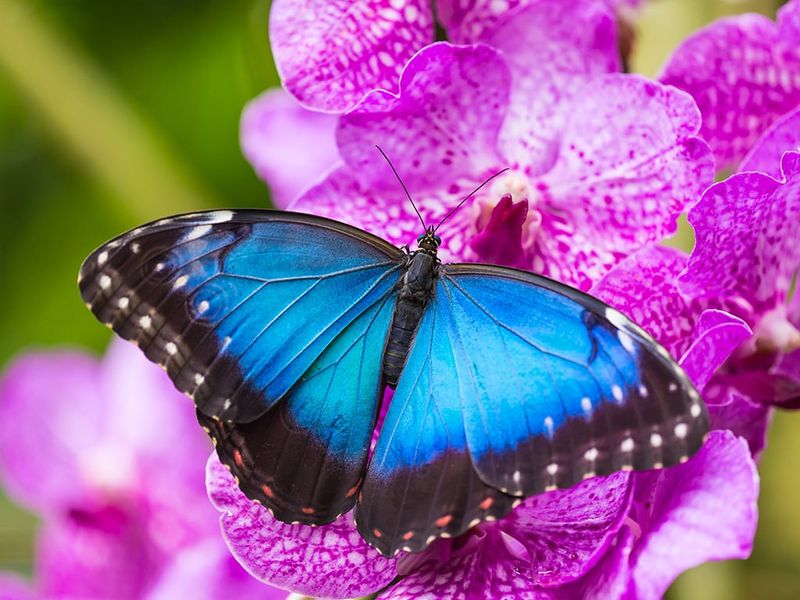
The Blue Morpho Butterfly, with its iridescent blue wings, is a jewel of the rainforest. Found in Central and South America, this butterfly is known for its swift and erratic flight.
Its wings’ vibrant color is due to the microscopic scales that reflect light, creating a dazzling display. This adaptation serves as a deterrent to predators, as the flashes of blue confuse and ward off threats.
Despite challenges like habitat loss, the Blue Morpho remains a symbol of the rainforest’s rich biodiversity and the wonders of nature’s design.
Great White Shark
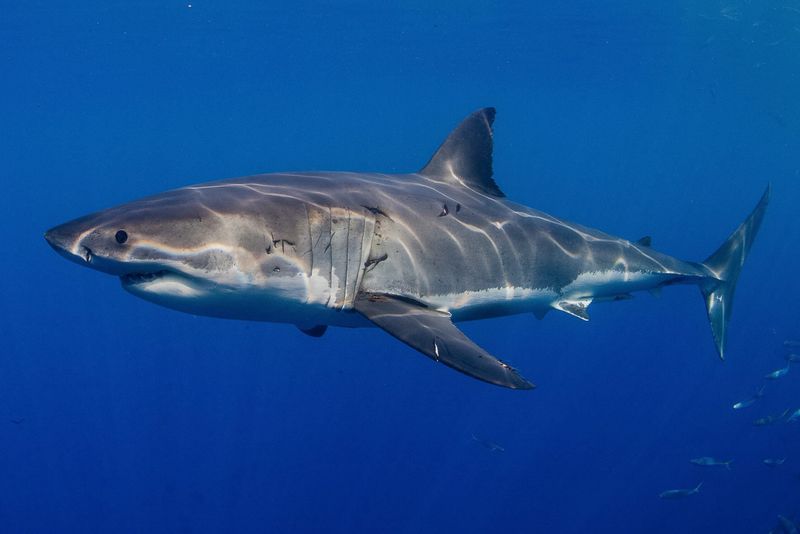
The Great White Shark, an apex predator of the ocean, commands respect and awe. With its powerful build and keen senses, it navigates the seas with confidence, hunting seals and fish.
Despite their reputation, attacks on humans are rare and often a case of mistaken identity. Great Whites are crucial to marine ecosystems, helping maintain balance by controlling prey populations.
Overfishing and environmental changes threaten their numbers, underscoring the need for conservation efforts to protect these magnificent creatures and their ocean habitat.
Emperor Penguin
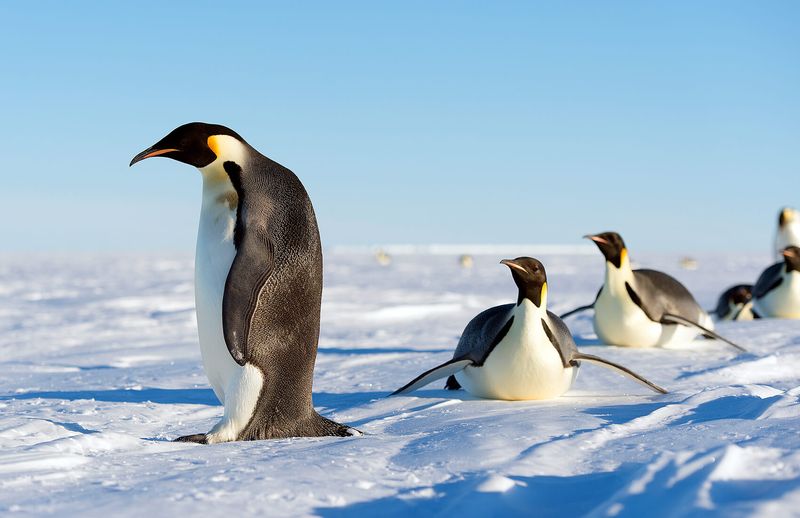
Emperor Penguins, the largest of the penguin species, are renowned for their endurance in the harsh Antarctic environment. Their black and white plumage provides camouflage, while their social behavior aids survival.
These penguins huddle together for warmth, withstanding extreme cold and fierce winds during the breeding season. Parents take turns incubating eggs and foraging for food in the icy waters.
With climate change impacting their habitat, protecting Emperor Penguins is vital to preserving the delicate balance of the Antarctic ecosystem they inhabit.
Komodo Dragon
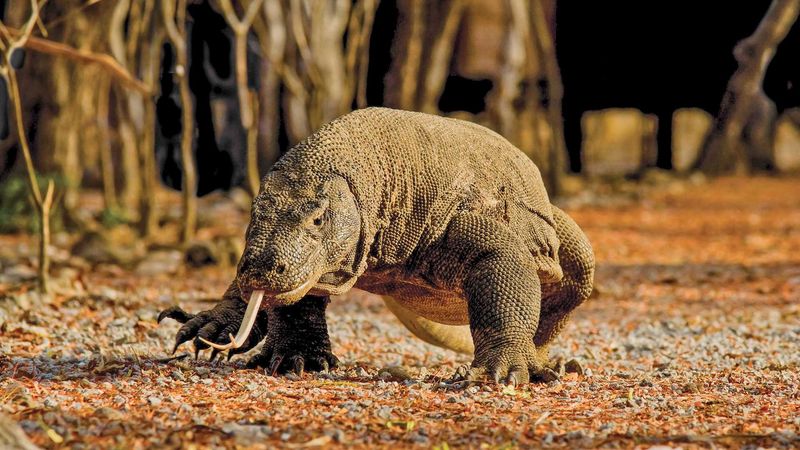
The Komodo Dragon, the largest living lizard, is a formidable predator found on the islands of Indonesia. With their powerful limbs and sharp claws, these reptiles can take down prey much larger than themselves.
Komodo Dragons have a keen sense of smell, using their long tongues to detect scents carried by the wind. They are solitary hunters, relying on stealth and ambush tactics.
Conservation efforts on Komodo Island focus on habitat protection and managing human-wildlife interactions, ensuring these ancient reptiles continue to thrive in their natural environment.
Red-Crowned Crane
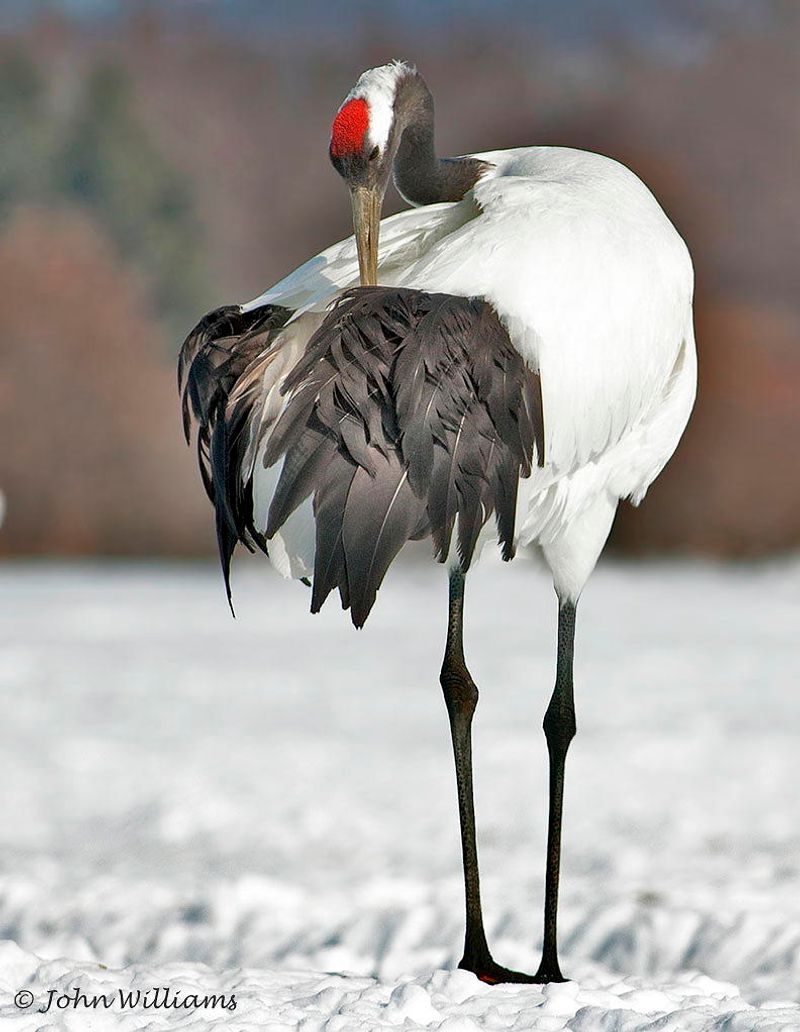
The Red-Crowned Crane is synonymous with grace and elegance. Found in East Asia, these cranes are revered in many cultures, symbolizing longevity and fidelity.
Their courtship dance, characterized by elaborate leaps and calls, is a breathtaking spectacle. These cranes inhabit wetlands and marshes, relying on these ecosystems for feeding and breeding.
Despite being endangered due to habitat loss and human disturbance, conservation efforts focus on wetland protection and international collaboration to ensure these majestic birds continue to grace the skies.
Orangutan
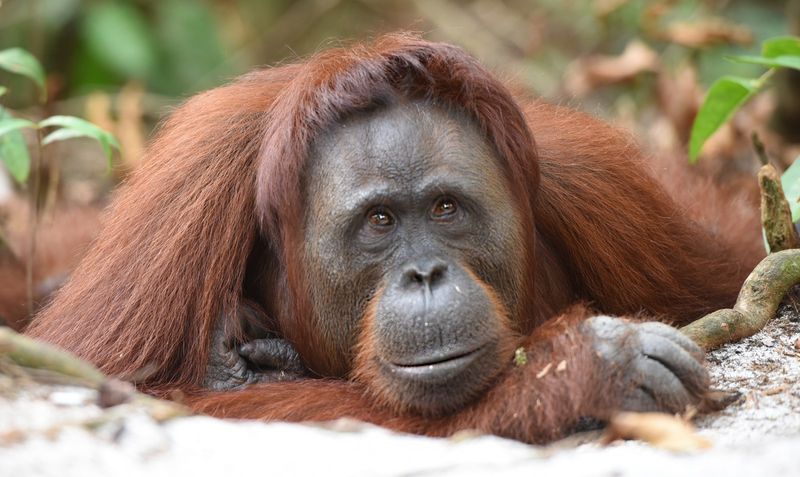
Orangutans are intelligent great apes native to the rainforests of Borneo and Sumatra. Known for their distinctive red fur and expressive faces, they spend much of their lives in the trees.
These primates are solitary, with complex social structures and the ability to use tools, highlighting their cognitive abilities. Orangutans play a crucial role in seed dispersal, contributing to forest regeneration.
Threatened by deforestation and illegal wildlife trade, conservation programs are essential to protect their habitats and ensure the survival of these captivating creatures.
Harpy Eagle
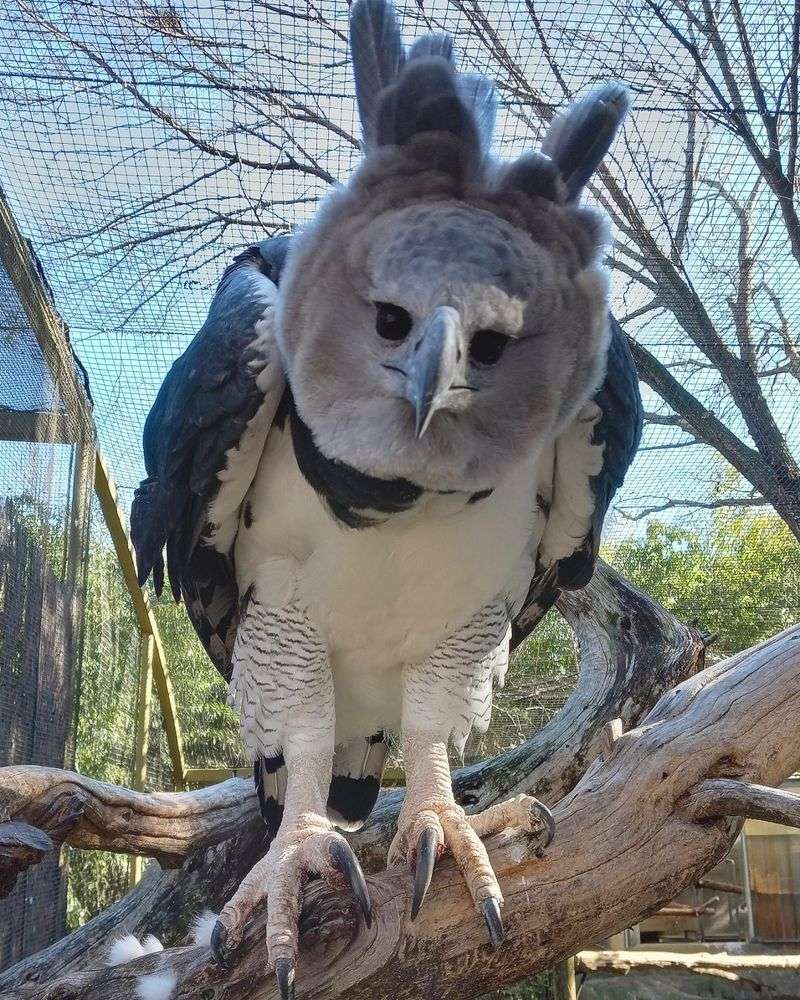
The Harpy Eagle is one of the world’s most powerful raptors, found in the tropical rainforests of Central and South America. With striking features, including a distinctive crest and formidable talons, they are apex predators.
Harpy Eagles primarily hunt mammals, including monkeys and sloths, showcasing their strength and agility. They are vital to maintaining the biodiversity of their ecosystem.
Deforestation poses a threat to their habitat, but conservation initiatives focus on forest preservation and public awareness, ensuring these magnificent birds continue to soar through the skies.
Koala
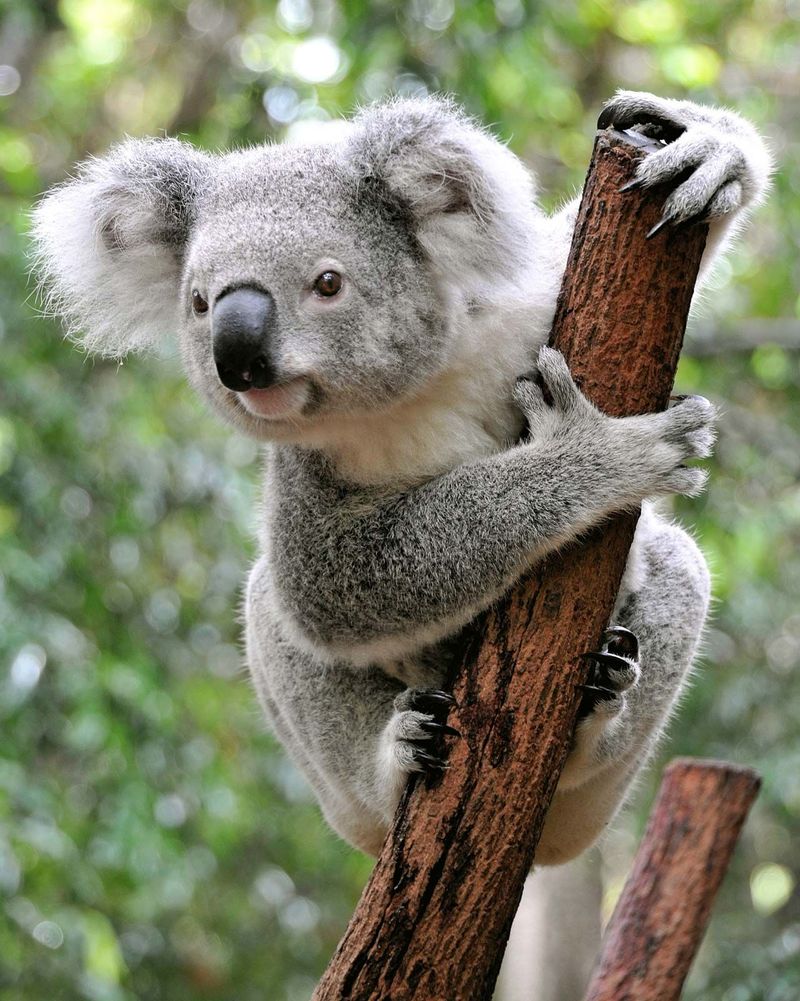
Koalas, with their fluffy ears and gentle demeanor, are iconic symbols of Australia’s wildlife. These marsupials spend most of their time in eucalyptus trees, feeding on leaves and sleeping for up to 18 hours a day.
Despite their cuddly appearance, koalas have sharp claws and strong limbs for climbing. They rely heavily on eucalyptus forests, which are increasingly threatened by land clearing and bushfires.
Conservation efforts focus on habitat protection and rehabilitation, ensuring that these endearing animals continue to thrive and charm visitors from around the world.
Mandarin Duck
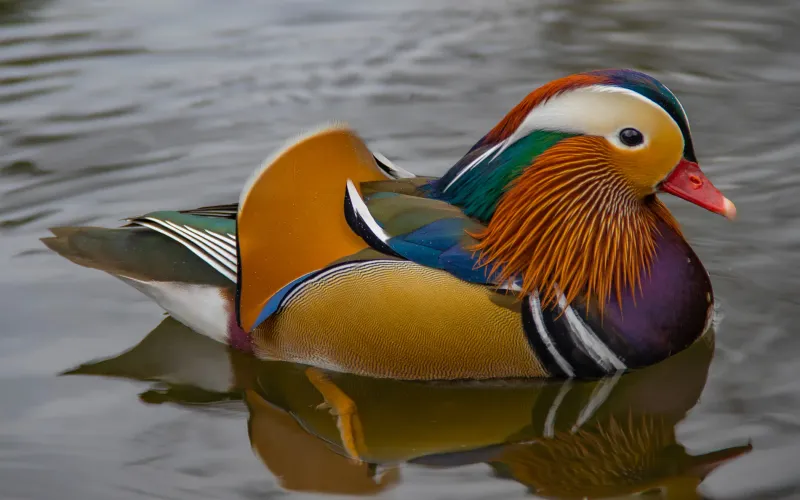
The Mandarin Duck is a spectacle of color, with intricate patterns and hues that dazzle the eyes. Native to East Asia, these ducks are often found in wooded ponds and rivers.
Renowned for their beauty, Mandarin Ducks are believed to symbolize love and fidelity, often seen in pairs. Their diet consists of aquatic plants and small invertebrates, contributing to their ecosystems.
Although habitat loss poses challenges, these ducks adapt well to new environments, and their stunning appearance continues to captivate bird enthusiasts and nature lovers alike.
Okapi
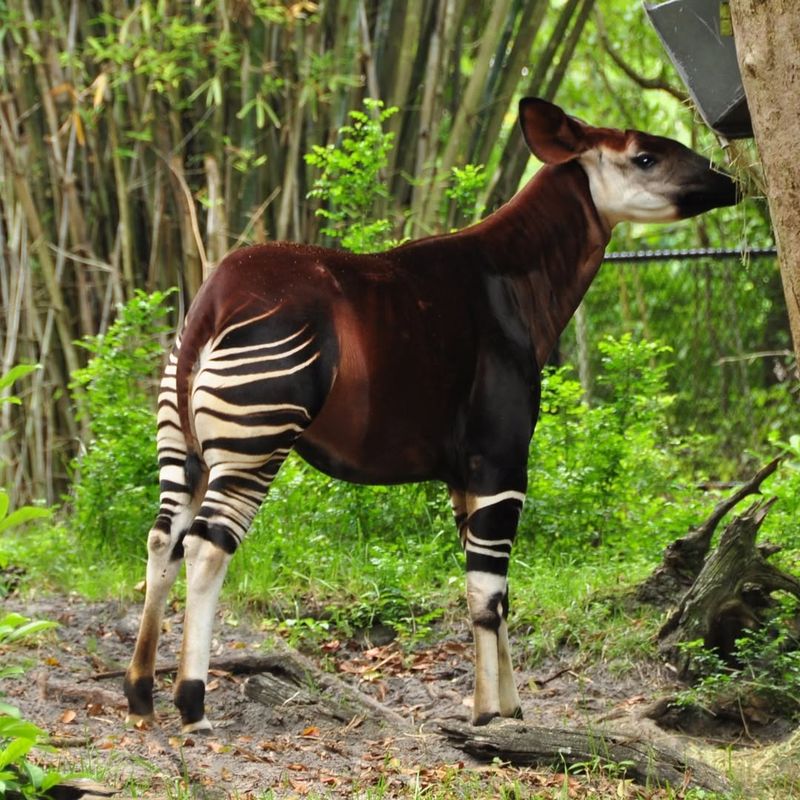
The Okapi, a relative of the giraffe, is an enigmatic creature of the African rainforests. With zebra-like stripes and a giraffe-like body, it is a master of disguise.
These solitary animals are browsers, feeding on leaves and tree bark, playing a vital role in forest ecology. Okapis remain elusive, with limited understanding of their behaviors in the wild.
Conservation efforts focus on habitat preservation and research to better understand and protect these unique animals, ensuring their mysterious presence continues to fascinate.
Arctic Fox
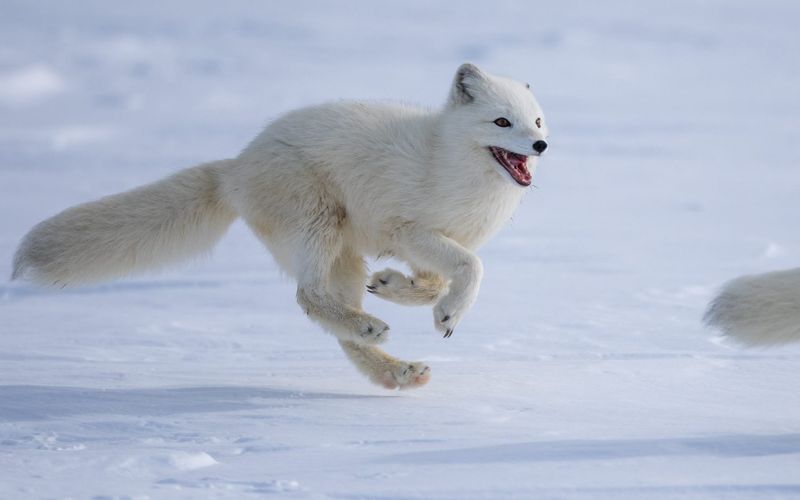
The Arctic Fox, with its thick white winter coat, is a true survivor of the frozen north. These small, resilient predators are well adapted to the harsh conditions of the Arctic tundra.
Their fur changes color with the seasons, providing camouflage and aiding in hunting. Arctic Foxes primarily feed on small mammals, such as lemmings, and scavenge when necessary.
Climate change threatens their habitat, but conservation initiatives aim to protect their fragile ecosystems, ensuring these clever creatures continue to outwit the challenges of their icy world.
Cheetah
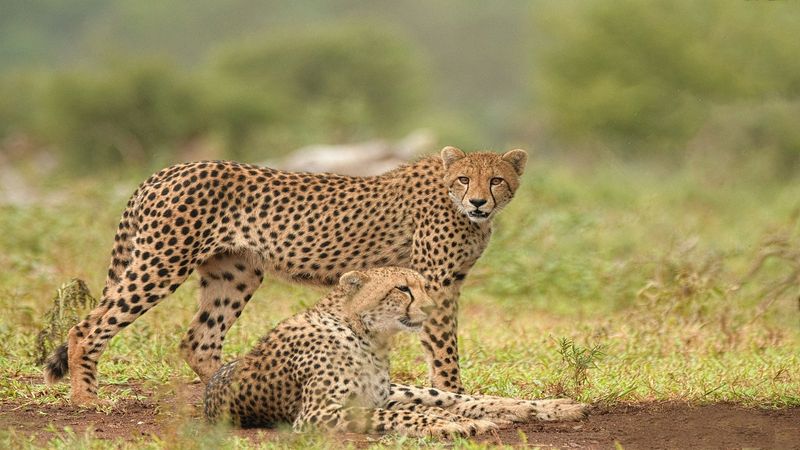
The Cheetah, renowned for its incredible speed, is the fastest land animal, capable of reaching speeds up to 70 mph. Found in Africa’s savannahs, they rely on their agility and keen eyesight to hunt.
Cheetahs have a unique social structure, with males often forming groups while females lead solitary lives. Their distinctive tear marks help reduce glare, enhancing their focus during high-speed chases.
Threats from habitat loss and human-wildlife conflict necessitate conservation efforts to protect these swift predators and maintain the balance of their ecosystems.
Macaw
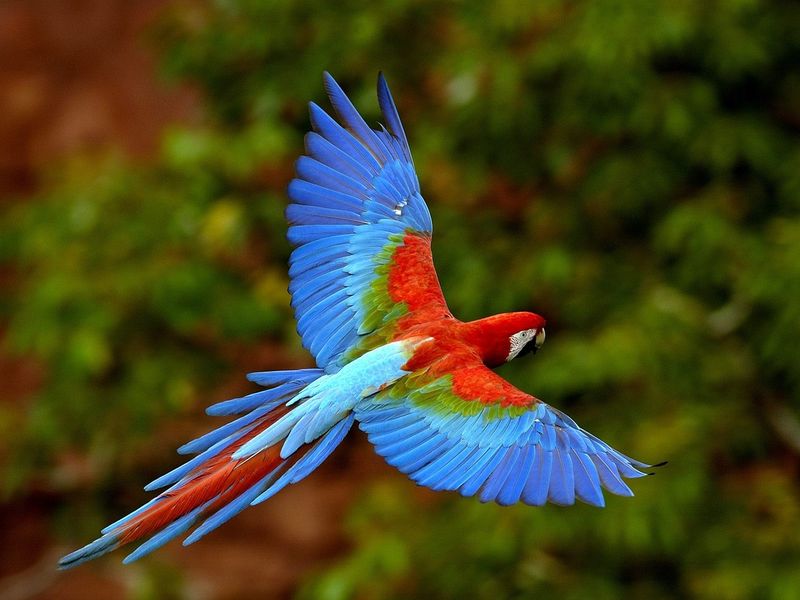
Macaws, with their vivid plumage and engaging personalities, are among the most recognizable parrots of the tropics. Native to Central and South America, they inhabit rainforests and woodlands.
These social birds are known for their intelligence and ability to mimic sounds. Macaws play an integral role in seed dispersal, supporting forest growth.
Challenges like habitat loss and the illegal pet trade threaten their populations, prompting conservation efforts that focus on habitat protection and breeding programs to keep these charismatic birds thriving.
Galápagos Tortoise
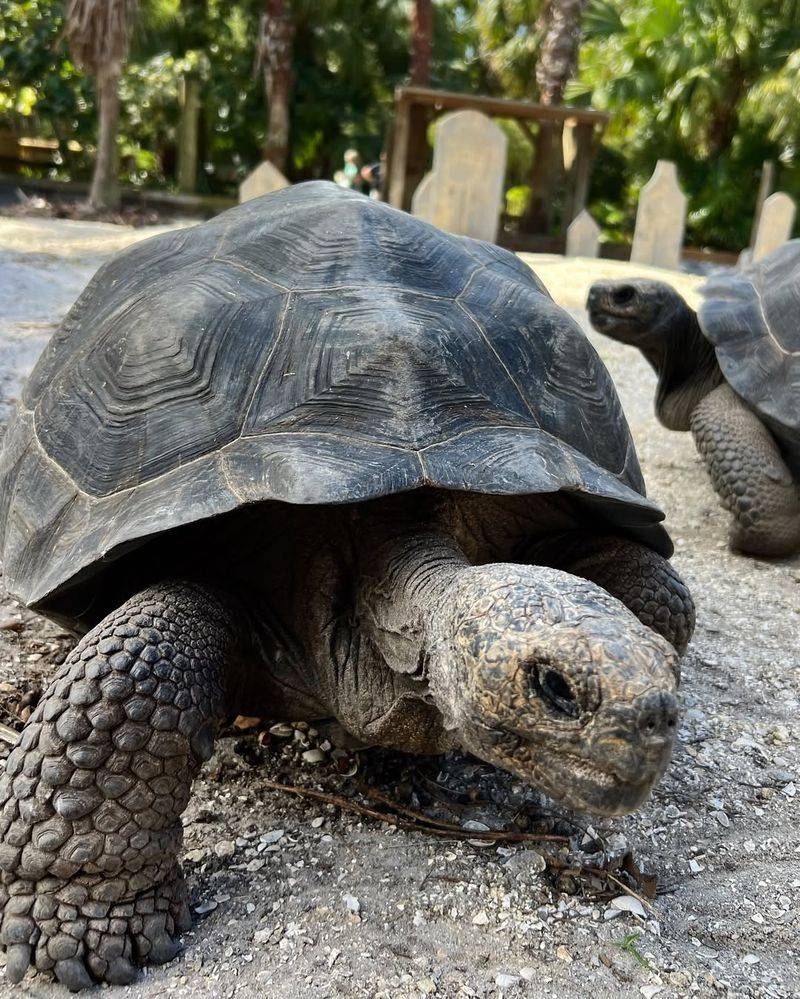
The Galápagos Tortoise is a symbol of evolutionary wonder, known for its immense size and longevity. These tortoises are found on the Galápagos Islands, where they navigate the volcanic terrain.
With their slow-paced lifestyle, they have adapted to the islands’ unique environment, grazing on grasses and cacti. Galápagos Tortoises have become emblematic of conservation, reflecting the importance of preserving biodiversity.
Efforts to protect their habitats and control introduced species are vital to ensure these gentle giants continue to roam their island paradise for centuries to come.
King Cobra
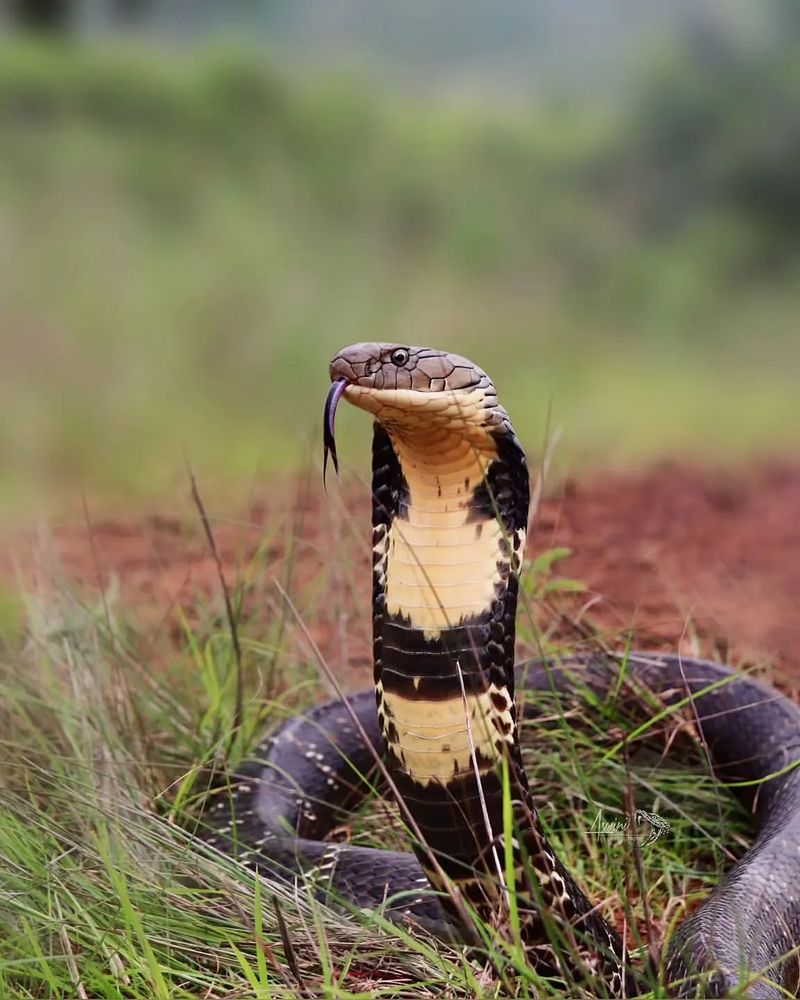
The King Cobra, the world’s longest venomous snake, is a creature of both beauty and danger. Found in forests across India and Southeast Asia, they are known for their intimidating hood displays.
Despite their fearsome reputation, King Cobras are shy and avoid human encounters. Their diet mainly consists of other snakes, playing a unique role in controlling prey populations.
Habitat destruction and human conflict threaten their survival, making conservation actions crucial to protect these regal serpents and their natural habitats.
Red Panda
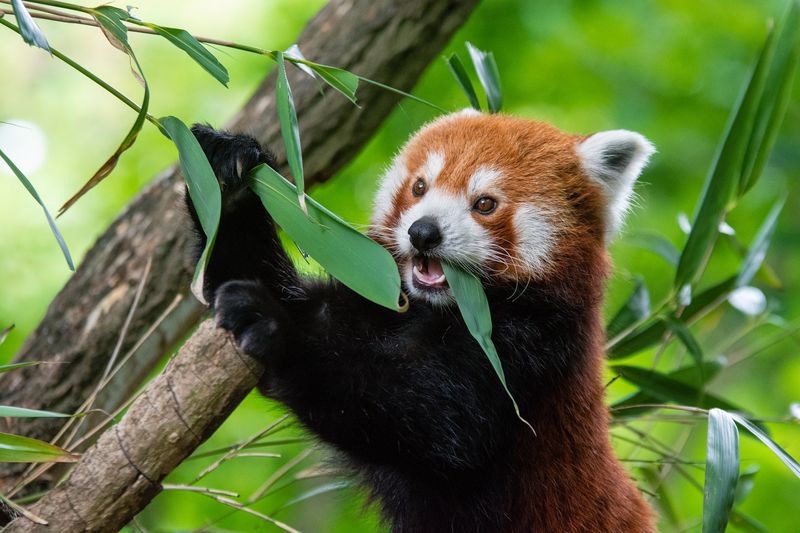
Red Pandas, with their bushy tails and charming faces, are endearing residents of the Himalayan forests. Despite their name, they are not closely related to giant pandas.
These solitary creatures spend much of their time in trees, feeding on bamboo and other vegetation. Red Pandas are vital to their ecosystem, aiding in seed dispersal and forest health.
Threatened by habitat loss and poaching, conservation efforts focus on habitat protection and community involvement, ensuring these adorable mammals continue to thrive in their mountainous homes.
Narwhal
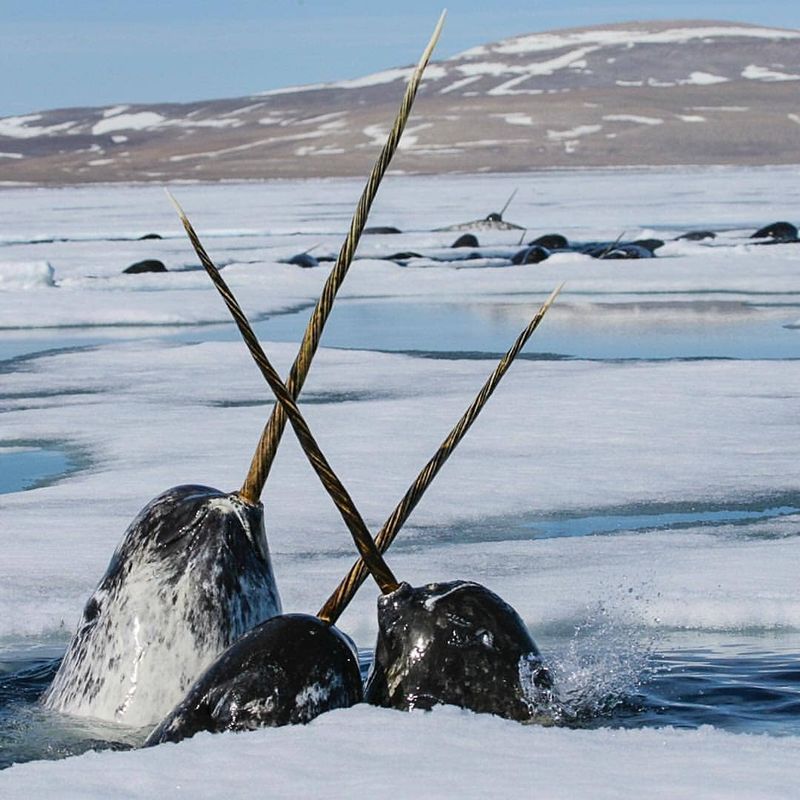
The Narwhal, often dubbed the “unicorn of the sea,” is a mysterious whale found in the Arctic. Its long, spiral tusk is actually an elongated tooth, used for sensing changes in the environment.
Narwhals travel in pods, navigating the icy waters in search of fish and squid. Their tusks and unique behaviors make them a subject of fascination and study.
Climate change and human activities pose challenges to their survival, prompting conservation plans to ensure these enigmatic creatures continue to enchant the frigid seas.
Giraffe
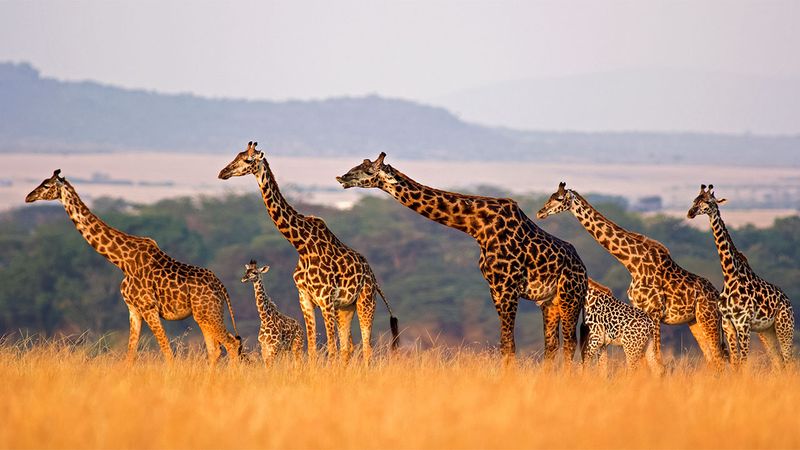
Giraffes, with their towering height and elegant stride, are gentle giants of the African savannah. Their long necks allow them to reach foliage unreachable to other herbivores.
These social animals can often be seen in loose groups, using their keen eyesight to watch for predators. Giraffes play a significant role in their ecosystem, aiding seed dispersal and maintaining plant diversity.
Despite facing threats from habitat loss and poaching, conservation initiatives aim to protect their habitats and ensure these iconic creatures continue to grace the landscapes of Africa.
Snowy Owl
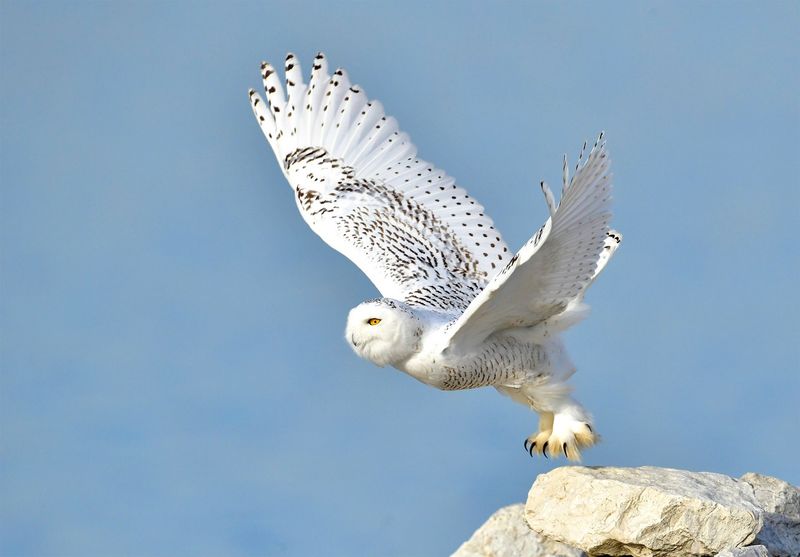
The Snowy Owl, with its striking white plumage, is an iconic symbol of the Arctic wilderness. These birds are adapted to life in the tundra, where their feathers provide insulation and camouflage.
Snowy Owls are powerful hunters, preying on small mammals and birds. Their presence is often seen as a harbinger of winter, their silent flight adding to their mystique.
Habitat changes due to climate warming present challenges, but conservation efforts focus on understanding and protecting these magnificent birds and their fragile Arctic environment.
Jaguar
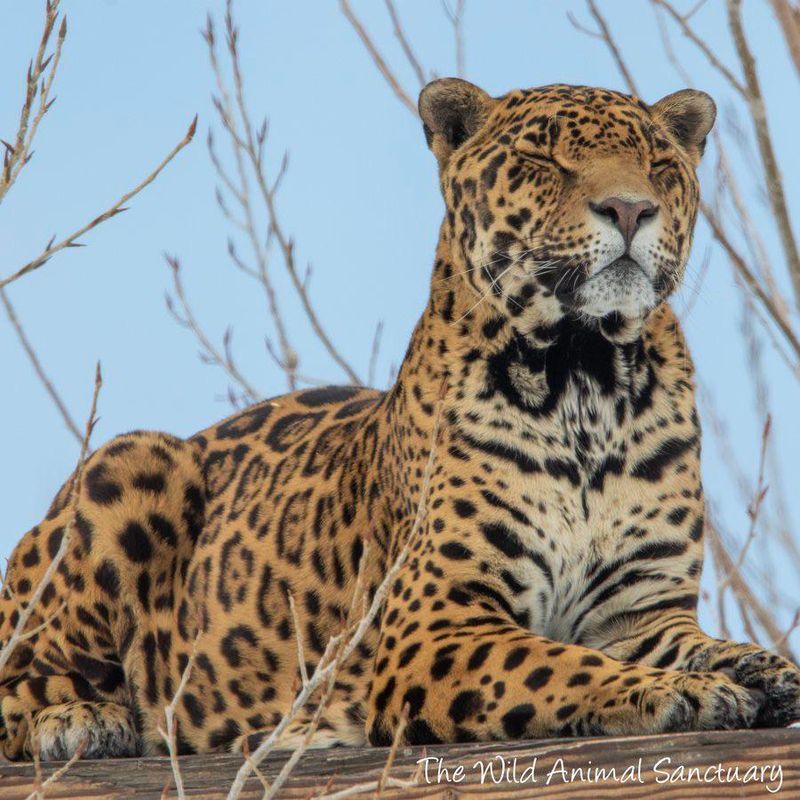
The Jaguar, an apex predator of the Americas, is renowned for its powerful build and beautiful rosette-patterned coat. These solitary cats roam the dense jungles and wetlands, hunting with stealth and precision.
Jaguars play a crucial role in their ecosystems by controlling prey populations and maintaining balance. Despite their strength, they face threats from habitat loss and human encroachment.
Conservation efforts are dedicated to habitat restoration and connecting fragmented landscapes, ensuring that these magnificent cats continue to thrive in the wild.
Glass Frog
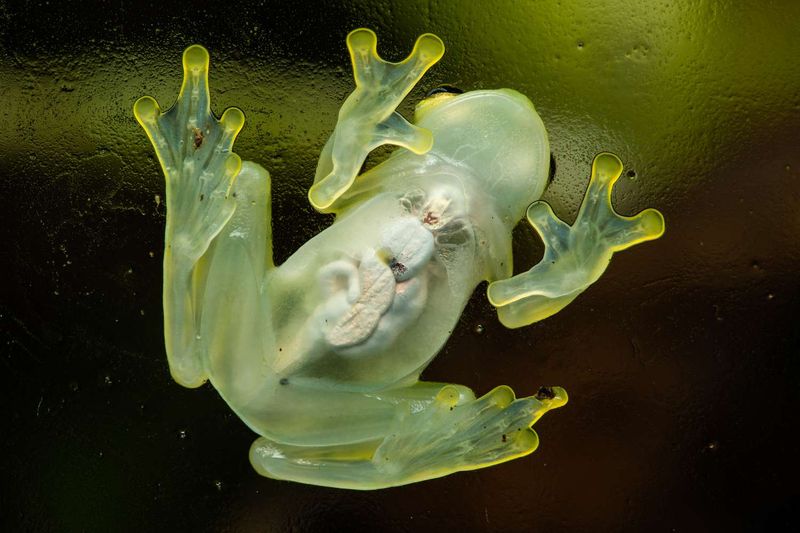
The glass frog is a tiny, enchanting creature found in the rainforests of Central and South America. What makes it truly special is its translucent skin, offering a unique window into the marvels of anatomy, as you can see its organs clearly. These frogs are most active at night, their green hues blending seamlessly with the leaves.
By day, they rest silently, relying on their camouflage to evade predators. Their life on the underside of leaves is a delicate balance between survival and mystery. These frogs embody the fragile beauty of the rainforest ecosystem, mesmerizing anyone who chances upon them.
Frilled Lizard
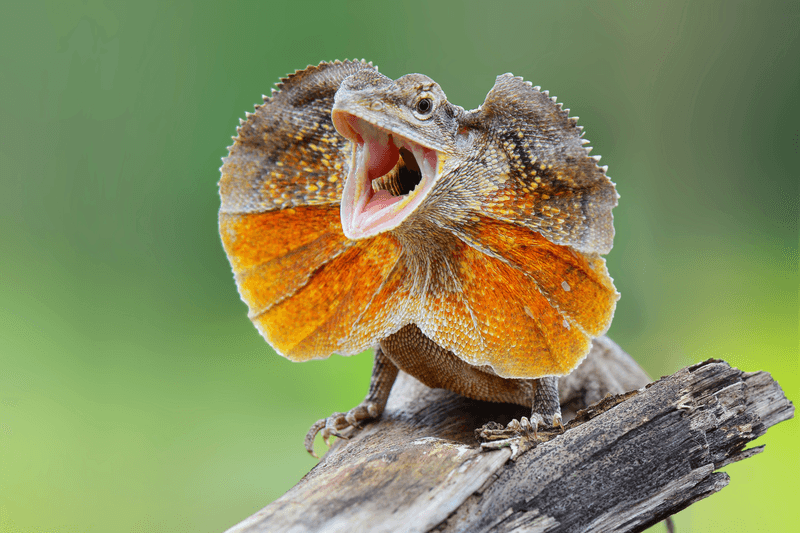
The Frilled Lizard, native to northern Australia and Papua New Guinea, is famous for its dramatic display when threatened. The large frill around its neck unfolds like a fan, making it appear much larger than it is.
This unique defense mechanism, combined with their ability to run on two legs, has fascinated scientists and wildlife enthusiasts alike. Despite their fierce appearance, they are generally harmless to humans.
Frilled Lizards thrive in warm, forested environments where they hunt for insects and small vertebrates. Their distinctive appearance and behavior make them a standout species in the reptile world.

